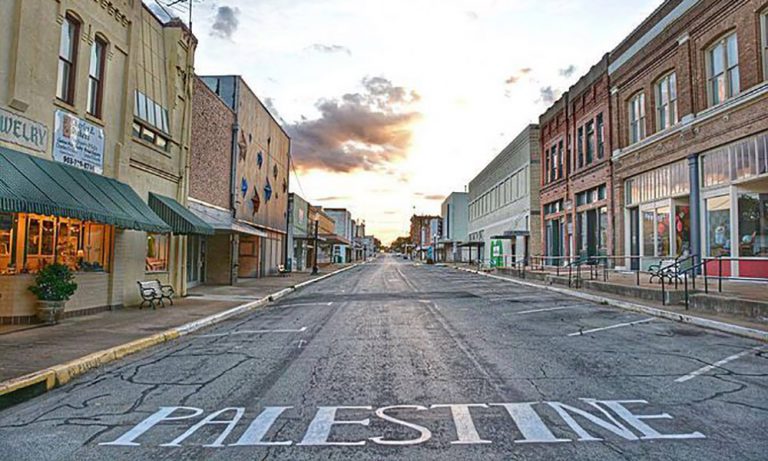
Palestine is notable for having 23 historical sites on the National Register of Historic Places and as the western terminus of the Texas State Railroad, now a state park, which operates steam excursion trains between Palestine and Rusk. This city is also the county seat of Anderson County, Texas. With a total area of 19.6 square miles, it was said to be named for Palestine, Illinois, by preacher Daniel Parker, while another theory says that it was named by migrant Micham Main for the same hometown. The city is at the intersection of U.S. highways 79 and 287, at the center of the county, some 108 miles southeast of Dallas and 150 miles north of Houston. Also, International Railroad and the Houston and Great Northern Railroad converged here in 1872 before merging in 1873 to become the International and Great Northern Railroad (IGN). The IGN later became part of the Missouri Pacific Railroad, then ultimately Union Pacific Railroad. In 1875, IGN President H.M. Hoxie moved to Palestine and built the first Victorian mansion there. The discovery of oil in 1928 at Boggy Creek, east of Palestine, diversified the town's economy and carried Palestine through the Great Depression. Also, the Mallard home was the oldest still standing in Palestine in 1990. Palestine is also the site of NASA's National Scientific Balloon Flight Facility. The city is also host to several thousand who visit the annual Texas Dogwood Trails every spring. Lake Palestine, a reservoir of 25,500 surface acres on the Neches River, provides water. Airports and heliports located in Palestine include Palestine Municipal Airport (PSN) (Runways: 2), Briar Lakes Ranch Airport (11XA) (Runways: 1), and Palestine Regional Medical Center Heliport (4TS3). In 2017, the population was 18,306.
Are you a customer or the owner/manager of the business you'd like to add?